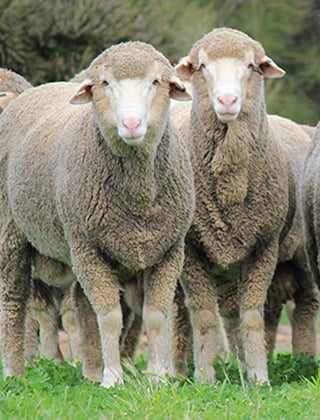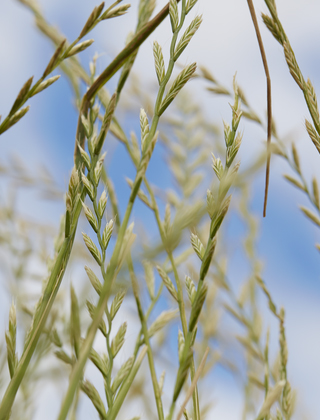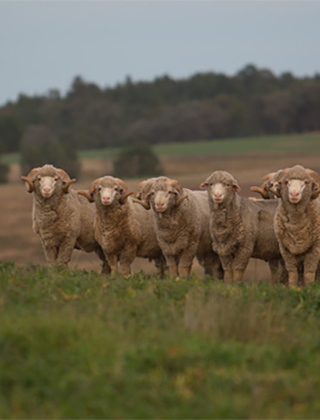MERINOSELECT ASBVs by fibre diameter and their genetic trends
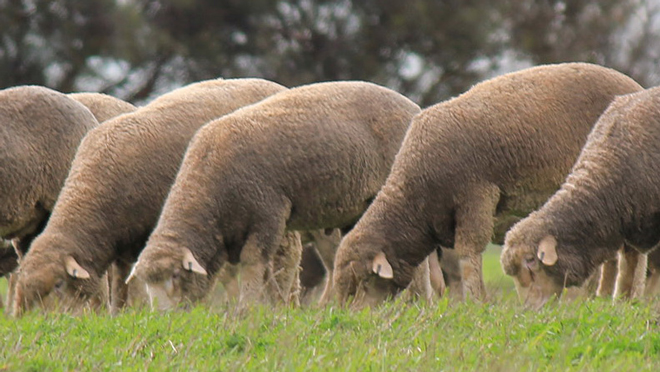
There are significant production differences in Merino sheep that can be highlighted by grouping animals based on fibre diameter. Over the past 200 years, selective breeding, differences in climatic conditions and markets, and different historical breed groups – such as the Saxon, Spanish, Rambouillet, Peppin, and English Long Wools – have all contributed to these differences.
In the tables below, ram breeder flocks have been grouped into five categories based on their average Adult Fibre Diameter (AFD) Australian Sheep Breeding Value (ASBV). Table 1 highlights the production data for each category, while Tables 2 through 6 detail the genetic trends within these categories since 2000. Despite significant antagonisms between some traits, ram breeders in all categories continue to achieve progress in key traits.
Some individual ram breeders outperform the averages. The entry of new breeders or increased phenotyping of traits by existing breeders have not had significant impacts on the overall or diameter category trait trends.
Table 1 outlines the average ASBVs for a range of traits (wool, carcass, reproduction, parasite-related traits for worms and flies, and four key industry indexes) for the 2022 drop progeny, from flocks grouped into five AFD ASBV categories (<-3, -3 to -2, -2 to -1, -1 to 0, and 0 to +1). This data, sourced from AGBU/MERINOSELECT, serves as a benchmark for Merino breeders aiming to set realistic and impactful ASBV targets based on their flock's adult micron ASBV.
By setting slightly improved targets within their AFD category for key economic and welfare traits, breeders can significantly enhance the index most relevant to their micron type and production system.
Performance across fibre diameter categories
- Super fine wool flocks (<-3.0 AFD ASBV):
These flocks perform well not only in fibre diameter and the Fine Wool Index, but also in traits such as Eating Quality (IMF and Shear Force), Worm Resistance, Wool Colour, Fleece Rot and Wool Character. However, they relatively underperform other micron types in Fleece Weight, Staple Length, Body Weight, Litter Size, Breech Wrinkle, and Breech Wool Cover. - Mid-micron wool flocks (-1 to 0 AFD ASBV):
These flocks perform well for Fleece Weight, Body Weight, Fat, Eye Muscle Depth, Weaning Rate, Breech Wrinkle, Breech Wool Cover, and the Merino Lamb Index. However, they lag in IMF and Shear Force, Wool Colour, Fleece Rot, and Wool Character.
Of note are:
- Genetic diversity: Merinos display significant variation in fibre diameter and body weight across categories.
- Reproduction trends: Higher micron categories exhibit higher weaning rates driven by increased litter size.
- Wrinkle vs. fleece rot: Low-micron flocks have higher breech wrinkle scores and lower fleece rot, while high-micron flocks exhibit the opposite. Selecting for lower breech wrinkle (lower risk of breech strike) can often result in increased fibre diameter, wool colour issues, fleece rot and higher risk of body strike.
- Eating quality: Super fine flocks tend to perform well for eating quality, but improvements in IMF and Shear Force can now be actively selected for all Merino types. These trends are more important with the very recent announcement of a cost effective reasonable line speed test for IMF.
Genetic gains since 2000
Tables 2–6 demonstrate genetic trends in key traits, including fleece weight, fibre diameter, and breech wrinkle. While breeders across all micron groups have made consistent gains, distinct trends are evident:
- Low-micron breeders (<-3 AFD): Have focused heavily on reducing fibre diameter and improving worm resistance, while other breeders have reduced their emphasis on worm resistance.
- Mid-micron breeders (-1 to 0 AFD): Have balanced improvements across multiple traits, including fat, muscle, fleece weight, fibre diameter, reproduction, and wrinkle.
- High-micron breeders (0 to +1 AFD): Have achieved significant gains in fat and muscle but at the expense of fleece weight, micron, wool colour, and shear force (perhaps unnecessarily given mid micron breeder trends and relative indexes).
The tables are averages for each micron category and some individual breeders are making faster changes than others. It is hoped that some new structural assessment ASBVs, like feet and backs, will be introduced soon so these traits can also be objectively monitored.
Emerging trends and opportunities
- Reproduction components: MERINOSELECT now reports the three component traits: Conception, Litter Size, and Ewe Rearing Ability along with Weaning Rate. While weaning rate gains have primarily come from increased litter size, there is now potential to specifically improve ewe rearing ability as well.
- Economic and welfare priorities: Most breeding programs focus on high-impact economic and welfare traits. However, adapting to changing markets and climatic conditions, such as micron premiums or parasite pressures, requires time to collect the measurements and gain genetic momentum in a balanced manner.
While genetic trends reflect change across key traits, the pace of improvement is influenced by breeders’ emphasis on specific traits, the expanding number of traits being selected, current market demands and predictions of future market demands. Detailed analysis of the trends have shown that new breeders and expanded phenotyping by existing breeders don’t significantly bias the trends.
More information: Geoff Lindon, AWI Program Manager Genetics and Animal Welfare Advocacy, Geoff.Lindon@wool.com
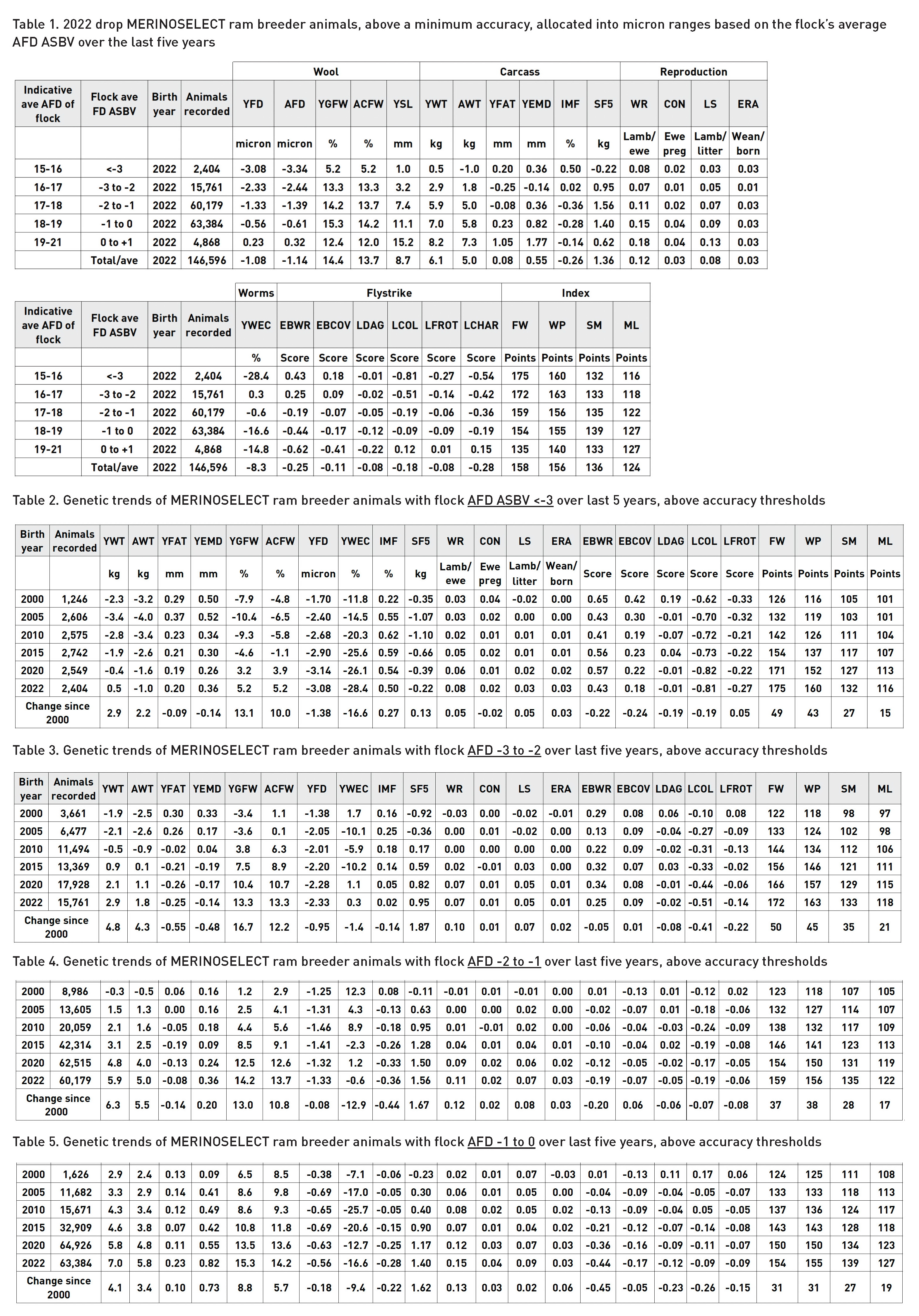
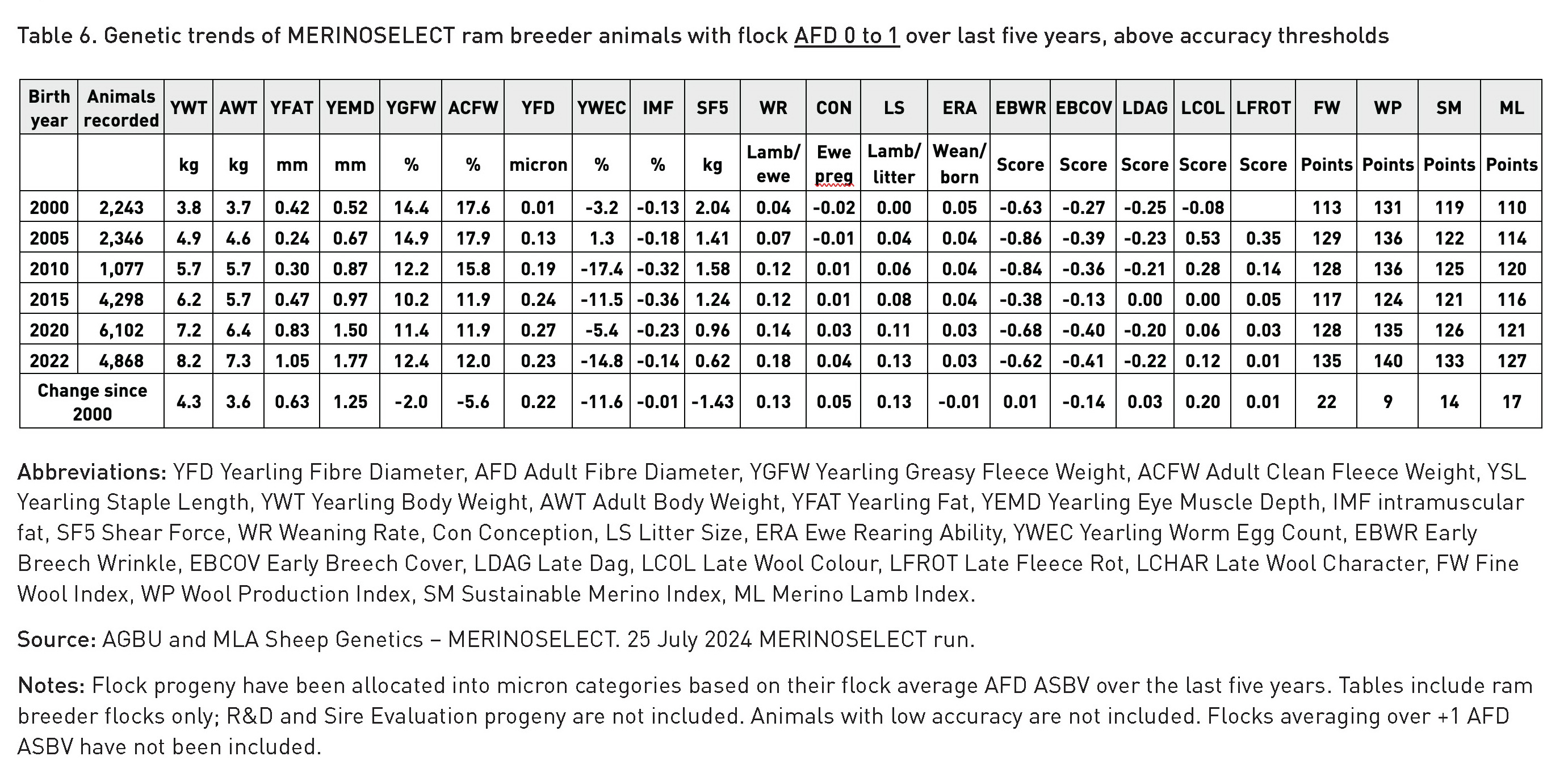
This article appeared in the December 2024 edition of AWI’s Beyond the Bale magazine. Reproduction of the article is encouraged.






